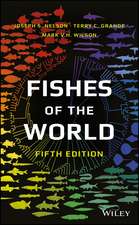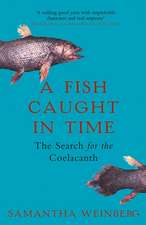Population Production and Regulation in the Sea: A Fisheries Perspective
Autor David H. Cushingen Limba Engleză Paperback – 23 iun 2010
| Toate formatele și edițiile | Preț | Express |
|---|---|---|
| Paperback (1) | 354.41 lei 6-8 săpt. | |
| Cambridge University Press – 23 iun 2010 | 354.41 lei 6-8 săpt. | |
| Hardback (1) | 872.46 lei 6-8 săpt. | |
| Cambridge University Press – 14 iun 1995 | 872.46 lei 6-8 săpt. |
Preț: 354.41 lei
Nou
Puncte Express: 532
Preț estimativ în valută:
67.82€ • 73.90$ • 57.15£
67.82€ • 73.90$ • 57.15£
Carte tipărită la comandă
Livrare economică 23 aprilie-07 mai
Preluare comenzi: 021 569.72.76
Specificații
ISBN-13: 9780521143714
ISBN-10: 0521143713
Pagini: 368
Dimensiuni: 152 x 229 x 21 mm
Greutate: 0.54 kg
Editura: Cambridge University Press
Colecția Cambridge University Press
Locul publicării:Cambridge, United Kingdom
ISBN-10: 0521143713
Pagini: 368
Dimensiuni: 152 x 229 x 21 mm
Greutate: 0.54 kg
Editura: Cambridge University Press
Colecția Cambridge University Press
Locul publicării:Cambridge, United Kingdom
Cuprins
Preface; 1. Introduction: some new discoveries in marine biology; 2. The role of nutrients in the sea; 3. A view of production in the sea; 4. Hydrographic containment and stock structure; 5. Climate and fisheries; 6. Recruitment; 7. Density dependent processes; 8. Stock and recruitment; 9. Conclusion: fisheries and marine ecology; References; Index.
Recenzii
"Fresh look at this age-old enigma, for marine biologists and fishery biologists to ponder." Fisheries
"...a comprehensive and current account of crucial linkages between the fate of marine fish larvae and subsequent population dynamics of juveniles and adults....a must-read for biological oceanographers and managers interested in fisheries population flucuations..." D. B. Eggleston, Choice
"Students of marine ecology and working fisheries biologists will find this book to be a stimulating source of ideas and questions. The text is clear and concise and the graphs and figures are easy to understand. This well-written book provides a valuable tool for the resource manager in the form of a review of published research and an extensive bibliography of the key marine production literature of the last century. It also points to the future of fisheries research, which will require collaboration between biologists and oceanographers." Douglas Clay, Environments
"The book is fascinating for its patient, detailed coverage....this volume is a major contribution to the study of a multidisciplinary issue in marine science....this book will find its most enthusiastic reception among professional oceanographers, fisheries scientists, and marine ecologists, for whom it should stimulate both discussion and collaboration." John J. Ney, The Quarterly Review of Biology
"...a comprehensive and current account of crucial linkages between the fate of marine fish larvae and subsequent population dynamics of juveniles and adults....a must-read for biological oceanographers and managers interested in fisheries population flucuations..." D. B. Eggleston, Choice
"Students of marine ecology and working fisheries biologists will find this book to be a stimulating source of ideas and questions. The text is clear and concise and the graphs and figures are easy to understand. This well-written book provides a valuable tool for the resource manager in the form of a review of published research and an extensive bibliography of the key marine production literature of the last century. It also points to the future of fisheries research, which will require collaboration between biologists and oceanographers." Douglas Clay, Environments
"The book is fascinating for its patient, detailed coverage....this volume is a major contribution to the study of a multidisciplinary issue in marine science....this book will find its most enthusiastic reception among professional oceanographers, fisheries scientists, and marine ecologists, for whom it should stimulate both discussion and collaboration." John J. Ney, The Quarterly Review of Biology
Descriere
This 1995 text explains how fish populations regulate themselves in relation to climatic change.











